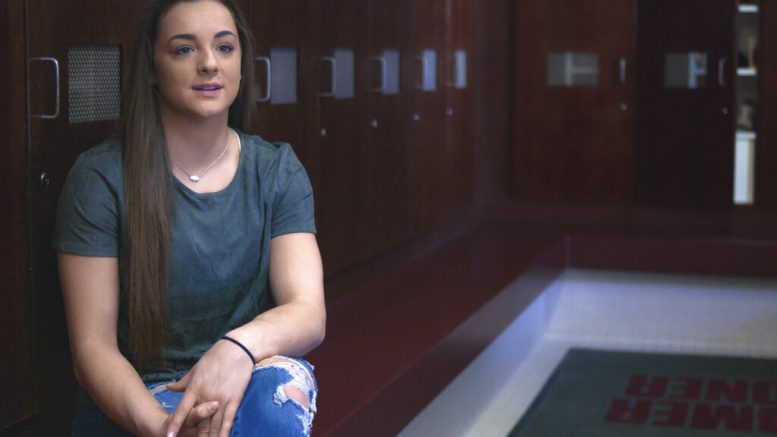The Associated Press
One of the most tragic lines in the powerful and damning documentary “Athlete A,” about sexual abuse in the USA Gymnastics, comes when the gymnast Jamie Dantzscher says Larry Nassar — the osteopathic physician who in his 29 years as the USA Gymnastics women’s team’s doctor u sed medical treatment as a guise for molesting hundreds of young athletes — was the only nice adult among the team staff.
It’s a point Dantzscher, a survivor of Nassar’s abuse, struggles to say out loud. But it’s an important one about the culture that allowed Nasser to operate and thrive in.
“I hate this sentence but I would actually look forward to treatment because Larry was the only nice adult I could remember being a part of the USA Gymnastics staff,” Dantzscher says in the film. “He was really the only nice adult there.”
“Athlete A,” which began streaming Wednesday on Netflix, chronicles the often harrowing process of brave women coming forward against Nassar and the belated justice that eventually came his way. He was sentenced to 40 to 125 years in prison in 2018.
But the documentary, directed by Bonni Cohen and Jon Shenk, is vigilant in widening is lens to capture the broader problems at USA Gymnastics. Nassar continued working for months after the first allegations, including those by Maggie Nichols, were brought to team leaders. (Nichols was then dubbed “Athlete A” to preserve her anonymity.) President Steve Penny, a former marketing executive, was later indicted on felony charges of tampering with evidence. In only a toxic atmosphere could a predator like Nassar seem like a friend to young competitors like Dantzscher.
But the sensational success of the US female gymnasts came at a steep cost. The program, gymnasts say, adopted the harsh, militant style of the former Soviet Bloc. It was overseen by coaches Bela and Martha Karolyi, who defected from Romania in 1981. Their training center in Huntsville, Texas, a wooded ranch where parents weren’t allowed, is where much of the abuse took place. The pervasive psychological abuse — to eat less, to perform through pain — survivors say made Nassar’s actions all the more confusing. Some of the Karolyis’ decisions — like dropping Nichols from the Olympic team shortly after she made the allegation — are also plainly dubious.
Aside from the vital issues of who knew about the abuse but didn’t contact authorities, there’s the question of whether the enormous pressure and marketing machinery set up around USA gymnastics should be borne by young girls. Many begin serious training as 10-year-olds at national centers. Predators, former gymnast Jennifer Sey says, were “everywhere.”
Blind eyes and cover-ups are also ubiquitous in “Athlete A,” one of the best of the many powerful #MeToo-era documentaries to delve into stories of powerful men and abuse, including “Leaving Neverland,” “Untouchable,”“Surviving R. Kelly” and “On the Record. ” It is also, like some of those films, about the important role the press has played in bringing these stories to light. “Athlete A” is told partially through the efforts of the Indianapolis Star (including investigative reporter Marisa Kwiatkowski), which began digging into reports of abuse in USA Gymnastics in 2016.
Few Olympic athletes have been more celebrated in recent years than USA gymnasts. But after “Athlete A,” you may never again watch America’s pursuit for gold with quite the same enthusiasm.
“Athlete A,” a Netflix release, is rated PG-13 by the Motion Picture Association of America for mature thematic content including detailed descriptions of sexual abuse of minors. Running time: 103 minutes. Three stars out of four.








































